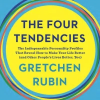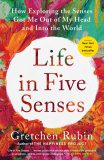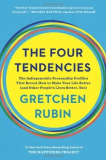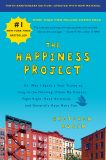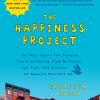Have you heard of “NaNoWriMo?” “National Novel Writing Month” is an engaging approach to writing a novel. The writing “month” is November, and starting on November 1, participants work toward the goal of writing a 50,000 word novel by midnight on November 30.
Are you planning to join NaNoWriMo?
As I describe in The Happiness Project, I did this program myself. I’d run into an acquaintance on the street, and she mentioned that she was writing a novel in a month. I was immediately intrigued. “How, why?” I asked.
She told me that she was following a program laid out in Chris Baty’s book, No Plot? No Problem! A Low-stress, High-velocity Guide to Writing a Novel in 30 Days. You start without any preparation, don’t edit yourself, and by writing 1,667 words a day, you write a 50,000 word novel in a month.
Now, for many people, this wouldn’t be an exciting prospect, but I went straight to a bookstore and bought the book myself. I followed the book’s instructions, and wrote my novel in the month of September, but far more people join the NaNoWriMo community each November, and each year, a big surge of people do it together.
By doing joining the official “month,” you join an international group of people who are pursuing their writing projects at this particular time, and you can announce your project to the group, attend local events, award yourself with participation and writing badges, update your word count each day, verify your word count by writing your draft on the site, choose a “writing buddy,” and so on.
In all my work, I think about the question, “What makes us happier, and how can we get ourselves actually to do the things that make us happier?” And one challenge for many people is: “I know I would be happier if I worked on a creative project, but how do I actually get myself to make consistent progress on this project or side hustle?”
A common happiness stumbling block is the feeling that you have a creative or entrepreneurial idea and impulse, but you’re not putting that creation out into the world.
I’ve been fascinated by NaNoWriMo for years, as a way to tackle this problem, and it’s interesting to think about why its design has helped so many people to complete ambitious projects.
For one thing, it’s interesting to think about how it works for the Four Tendencies.
For Upholders, write-a-novel-in-a-month provides a clear set of expectations. Note: as an Upholder, I didn’t join the group or do my project in November. I did it on my own, in September, when it made the most sense for me. Just reading the book was enough to get me to do it, without that structure. Which may have meant that I missed out on some fun, too, of course.
For Questioners, the program gives a concise justification for its perhaps seemingly arbitrary rules. “Our experiences since 1999 show that 50,000 words is a challenging but achievable goal, even for people with full-time jobs and children. This is about the length of The Great Gatsby. We don’t use the word ‘novella’ because it doesn’t seem to impress people the way ‘novel’ does.” This brief explanation establishes authority, shows that experience has born out the effectiveness of this program, and explains why the goal has been set at a certain number.
For Obligers, NaNoWriMo provides many kinds of accountability, which is crucial because a) Obligers need accountability if they’re going to follow through and b) different Obligers respond differently to different forms of accountability. Here, you can set up accountability by announcing your goal publicly, joining a group, earning visible gold stars in the form of badges, attending a meeting, pairing up with a “buddy,” getting your word count verified daily and at the end of the month by the program, etc.
For Rebels, NaNoWriMo is a fun challenge. It’s like running the Boston marathon, for creativity. “My friends don’t think I can write my novel in a month? Well, I’ll show them!” Rebels often like to meet their aims in unconventional ways — like NaNoWriMo. And with this program, you can drop out at any time, obviously, and you’re not locking yourself in for long. “Can I do this for a month? Of course I can!”
Obviously, even people who aren’t Questioners like to understand the reasons behind what they’re being asked to do, and even people who aren’t Rebels like a fun challenge, and even people who aren’t Obligers can benefit from accountability. That said, I do think that certain aspects of the program will resonate most deeply to particular Tendencies.
Also, in my book Better Than Before, I outline the twenty-one strategies we can use to make or break our habits.
NaNoWriMo taps into these habit strategies:
Convenience: by writing on the site, it’s easy to save your work, get credit for it, and track your word count.
Monitoring: when we monitor, we tend to do a better job of following through, and this program is all about monitoring what you’re creating. I remember that when I was writing my novel, I spent a lot of time checking my word count, to see if I’d reached the magic number of 1,667.
Scheduling: you’re writing every day, and as my Secret of Adulthood holds, it’s often easier to do something every day rather than sometimes or most days.
Loophole-Spotting: no excuses, no loopholes!
and very important…
First Steps: for many people, it’s hard to get started. This kind of boot camp, start-now approach is a way to get a project off the ground.
Have you ever tried NaNoWriMo — if so, how did it work out? If you haven’t done it, does this kind of program appeal to you?
If you want to read more about my experience writing a novel in a month (a novel that’s safely locked in a desk drawer now), I describe it in the chapter “September: Pursue a Passion” in my book The Happiness Project.

